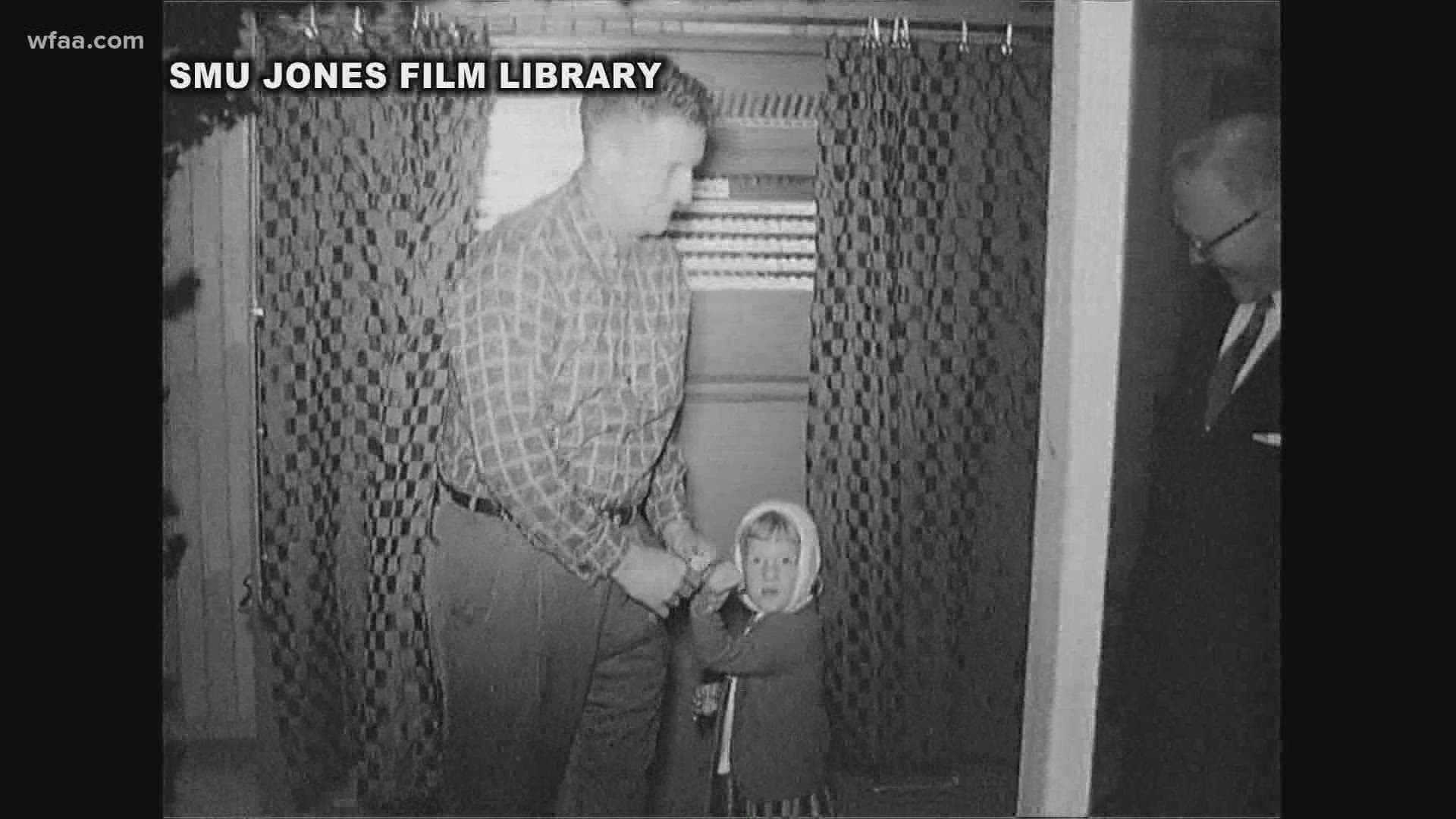Once it became obvious health and safety would be major concerns in a general election held during a pandemic, election officials across the country began looking for the best ways to cast votes while protecting voters along with the integrity of the election.
The increased use of mail-in ballots and curbside voting led to debates and legal challenges over the line between voter security and voter suppression.
But throughout history, Americans have practiced their right to vote in many ways while using many different tools and contraptions. And rarely has it happened without scrutiny and controversy.
Newspaper ballots
Bob Stein is a political science professor at Rice University and has studied the act of casting a ballot in America since its earliest forms dating back to when the new country was born in the 1700s.
“Newspapers would publish ballots and the ballots would be marked for the Whigs or the Federalists or the Republicans depending on what year it was,” Stein explained. “You would take this ballot to a local voting location that was usually a store or saloon.”
Depending on the location, the polling place/saloon was usually friendly towards one side of the ballot or the other and taking a favorable ballot to that location would earn one the reward of beer or rum, according to Stein.
Or rewarded with aggression and resistance if the ballot was not so favorable.
“The House keeps detailed records of this going back to the late 1700s and well into the 1930s and 1940s, where people would report horrendous violations of majority vote. People stuffing a ballot or having to fight.”
Teller voting machines
Sometime around the turn of the 20th century, a machine was developed to count votes while allowing voters to make their selections in secrecy. One of the earliest contraptions was the heavy, clunky, metal “gear and lever” model.
Video from the SMU Jones Film Library shows a line of people stretching down the hall at Thomas Rusk Junior High in Dallas on Election Day 1960 waiting their turn to step inside a booth and close a curtain behind them. Once inside, there were several small levers beside the name of each candidate on the ballot.
“The levers operated a dial in the back of the machine that counted the total votes,” said Stein.
Even though the machines are antiquated by today’s standards, they were still used in some parts of the country within the last decade. However, most of the country moved on to more trusted and reliable methods.
“The machines could be tampered with, and often were in cities like New York and other urban areas and led to controversies over fraud.”
Punch cards
One of the next innovations for voting was revealed to Dallas voters ahead of the 1970 midterm election. A WFAA story showed voters getting the opportunity to test out the new punch card system in the days before election day.
Election officials wanted to introduce the new system in a midterm election year rather than for the general election so voters could get familiar and comfortable with the new form of casting their ballot.
But even the perceived improvement was met with a combination of approval and skepticism.
“If we use this for the first election, I think there are going to be a lot of bad votes cast,” said a voter who stopped by for a practice run with the punch card.
But others appreciated the efficiency.
“Anyone with any intelligence at all can operate this,” said one man.
That statement would be put to the test 30 years later. Though punch cards and paper ballots were commonplace in much of the country in the 70s, 80s, and 90s, the month-long recounts and controversy plaguing the 2000 presidential election in Florida hastened the move to direct-recording electronic and digital systems used by most of the country today.
But that was not the only shift the 2000 election brought about.
Early voting
The election day controversy in 2000 led to many more states giving voters the opportunity to vote early should such problems at the polls arise.
Some states had already allowed early voting through expanding the absentee voting system.
Absentee voting was typically reserved for people who had a reason they were unable to vote on Election Day, but some states slowly began allowing for absentee voting with no reason needed.
Texas was one of the earliest adopters when the state implemented early voting at satellite sites in the early 1990s.
Casting votes ahead of Election Day is now extremely common across the country, with 43 states offering some form of early voting.
Nearly 100 million people took advantage and voted early in the 2020 election.

